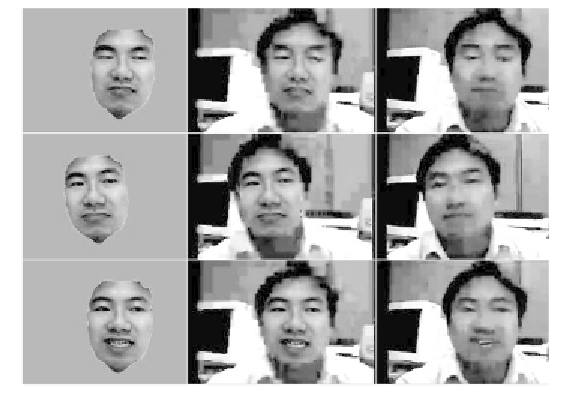Game Development Reference
In-Depth Information
visualize the results. It can be observed that compared with the neutral face (the
first column images), the mouth opening (the second column), subtle mouth
rounding and mouth protruding (the third and fourth columns) are captured in the
tracking results visualized by the animated face model. Because the motion units
are learned from real facial motion data, the facial animation synthesized using
tracking results looks more natural than that using handcrafted action units in Tao
(1998).
The tracking algorithm can be used in model-based face video coding (Tu et al.,
2003). We track and encode the face area using model-based coding. To encode
the residual in the face area and the background for which
a priori
knowledge
is not generally available, we use traditional waveform-based coding method
H.26L. This hybrid approach improves the robustness of the model-based
method at the expense of increasing bit-rate. Eisert, Wiegand & Girod (2000)
proposed a similar hybrid coding technique using a different model-based 3D
facial motion tracking approach. We capture and code videos of 352
240 at
30Hz. At the same low bit-rate (18 kbits/s), we compare this hybrid coding with
H.26L JM 4.2 reference software. Figure 9 shows three snapshots of a video
with 147 frames. The PSNR around the facial area for hybrid coding is 2dB
higher than H.26L. Moreover, the hybrid coding results have much higher visual
quality. Because our tracking system works in real-time, it could be used in a
real-time low-bit-rate video-phone application. Furthermore, the tracking results
×
Figure 9. (a) The synthesized face motion; (b) The reconstructed video
frame with synthesized face motion; (c) The reconstructed video frame
using H.26L codec.

Search WWH ::

Custom Search